

Explore Italy by place | region | time period
Roman Empire » Tivoli (Rome, Lazio)
In 527 BCE, on the death of Peisistratus his sons Hippias and Hipparchus succeeded to the tyranny.
Two friends of Gephyraean origin (Aphidna) and partners in a pederastic relationship, Harmodius and Aristogeiton, had made an attempt upon tyrants' life in 514 BCE, but only Hipparchus was killed. Hippias was finally expelled by the exiled Alcmaeonids (a wealthy and powerful noble family of ancient Athens) with Spartan aid (510 BCE).
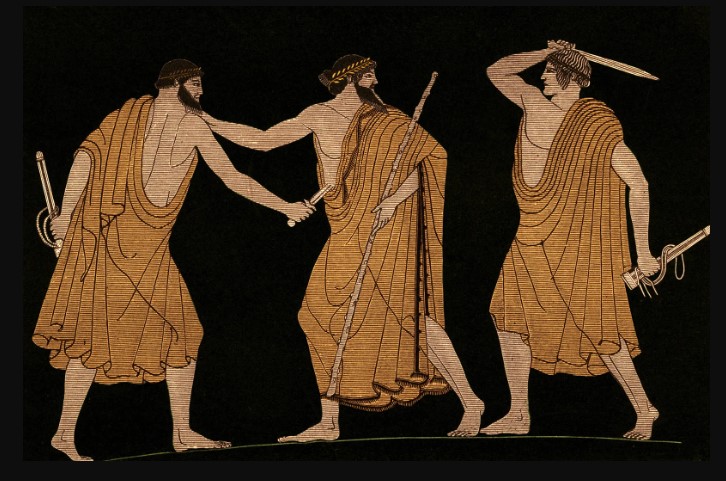
According to popular legend, Harmodius and Aristogeiton the tyrannoktonoi (tyrannicides) who died 514 BCE, freed Athens from the Peisistratid tyrants. They lost their lives in the act, but gained immortal fame. Thucydides in his work History of the Peloponnesian War [book vi], explains that the plot against the tyrants derived from Aristogeiton’s resentment of the advances made by the younger brother of the ruling tyrant Hippias toward his young friend Harmodius. The two friends, with a small band of accomplices, planned to kill both Hippias and his brother Hipparchus during the armed procession at the Panathenaic festival (514). The plot miscarried. They succeeded in killing only Hipparchus. Harmodius was slain on the spot, and Aristogeiton was captured and died under torture. The tyranny of Hippias became more ruthless and continued for four more years.
Anyway, the memory of the tyrant-slayers was celebrated in choral songs, tragedies, and with statues to heroize them.
Hard by stand statues of Harmodius and Aristogiton, who killed Hipparchus [514 BCE]. The reason of this act and the method of its execution have been related by others; of the figures some were made by Critius [445 BCE], the old ones being the work of Antenor. When Xerxes took Athens after the Athenians had abandoned the city he took away these statues also among the spoils, but they were afterwards restored to the Athenians by Antiochus.
- Pausanias, Description of Greece (1.8.5)
Pausanian tell us that perhaps Antenor the Athenian (510-480 BCE) made the first portrait-statues of the Tyrannicides Harmodius and Aristogeiton. It was probably then, soon after the actual fall of the tyranny around 510 BCE, that their statues were raised in the Agora. They were probably close to where the assassination took place, in the Kerameikos (Cerameicus) in Athens, near the Temple of Ares (Mars), where annual offerings were made by polemarch (the city's war-minister) treating the pair like those fallen in battle on behalf of the city. We know the laws prohibited the erection of other statues in their vicinity because they were the heroes or demigods, as if they were Achilles or Agamemnon.
It is not certain if the bronze statues were carried away by Xerxes after the destruction of Athens in the first stage of the Greco-Persian Wars (Pliny's Natural history, XXXIV, 70) or if removed from Athens by invading Persians in 480 BCE. We know that the statues were given the same respect as the tombs and images of the dead. They resembled a Palladion (protector) of Athens and its freedom. Therefore, the Persians wanted to take them away. However, due to their importance, as soon as the Athenians could reoccupy their cities, they decided to replace them with a similar work of art. Therefore, Critius and Nesiote were given the commission.
In 477 BCE, Kritios, an Athenian sculptor probably a pupil of Antenor, and Nesiotes were aiming to reproduce the original is not clear, but it does seem that the figures were intended as portraits, in which case they were the first official portraits in Greek art.
The new group stood in the Agora, the heart of Athenian civic life, and its composition is known from Roman copies. A copy wanted the Roman Emperor Hadrian to embellish his villa in the ancient Roman city of Tibur (today Tivoli). He was a man of culture and a great traveller. When commissioning what was to be his residence in a lush green area rich in water at the gates of Tibur, he asked for the places and monuments that had most impressed him during his many travels to be reproduced inside it.
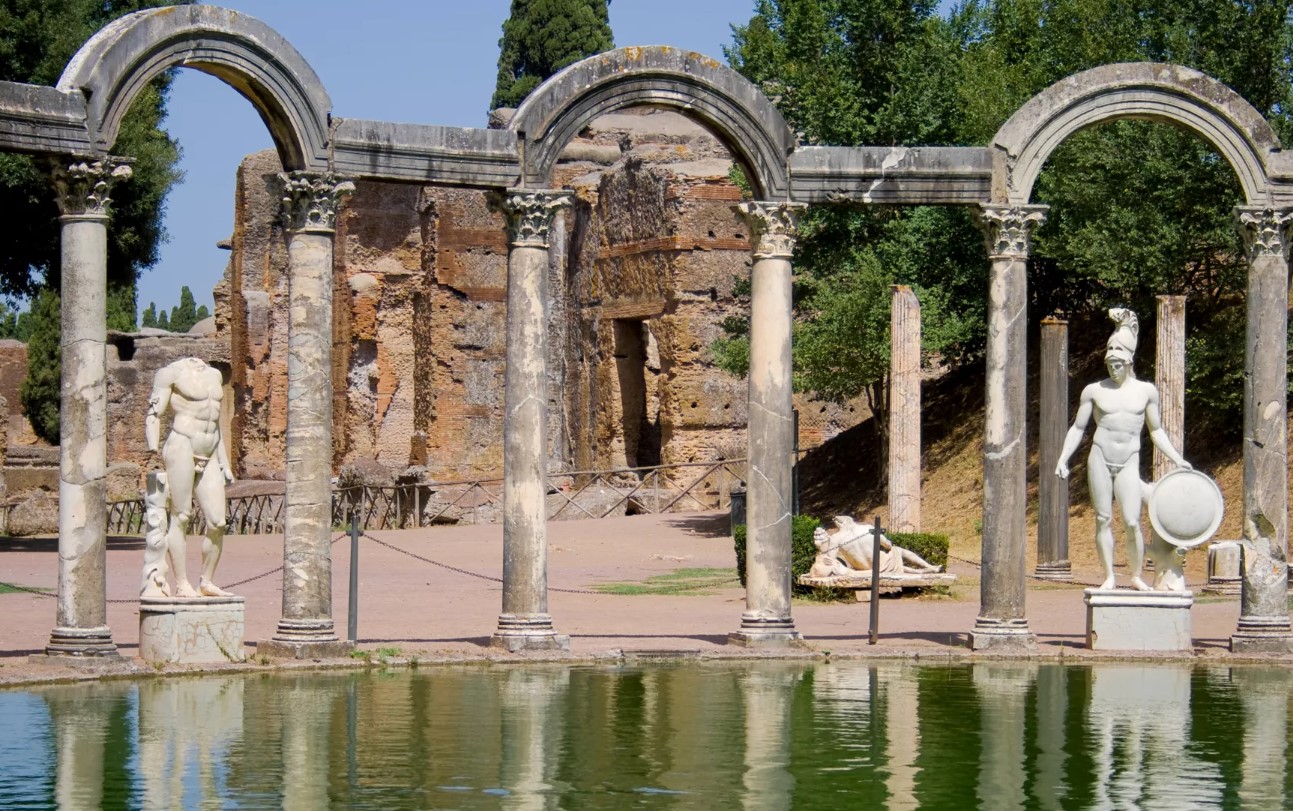
Hadrian’s Villa was an imperial country residence in the green heart of Latium, at the foot of the Tiburtine Mountains, a few kilometres from Rome. Built between 118 and 138 CE, Villa Adriana is the largest villa ever owned by a Roman emperor and rich in elements of Roman architecture fused with Egyptian and Greek architectural elements. It is considered the epitome in architecture of the opulence and elegance of the Roman world. Covering approximately 120 hectares, the complex was more an imperial garden city than a traditional villa. Its buildings were designed to follow the natural lay of the land and included baths, nymphaea, libraries, sculpture, theatres, alfresco dining halls, pavilions, gardens and residential structures representing the provinces conquered by the Roman Empire.
It is an open-air museum because significant portions of the complex have survived to modern times. Hadrian’s Villa was designated a Unesco World Heritage site in 1999. It was proclaimed a masterpiece that uniquely brings together the highest expressions of the material cultures of the Mediterranean world.
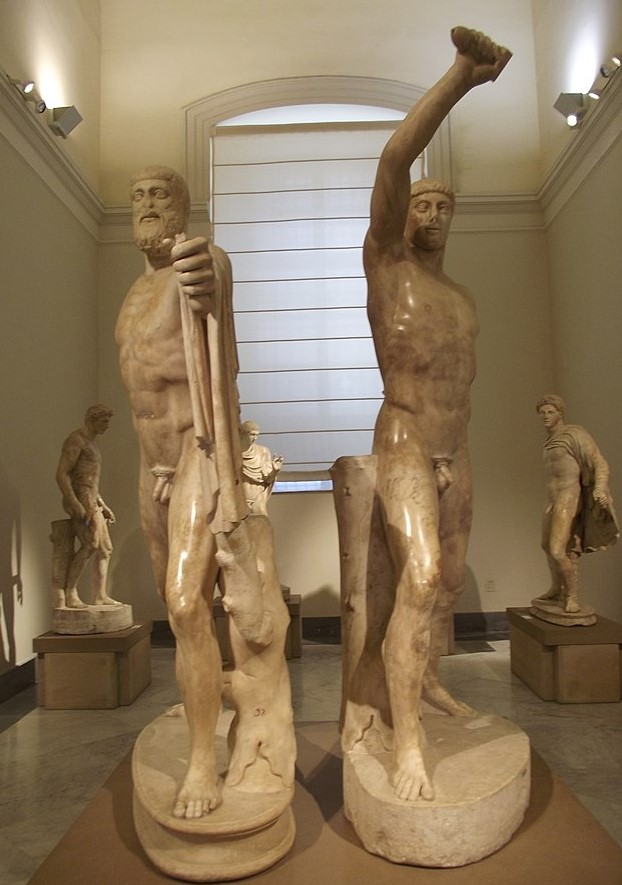
Hadrian was a well-traveled emperor, and he incorporated elements of architecture and design from all over the empire into his villa. His villa included a lot of sculptures and, among these, there was the Group of Tyrants. It is a Roman marble copy (2nd century CE) of the original bronze statues (5th century BCE) of Harmodius and Aristogeiton - the chief work of two artists Kritios and Nesiotes - and is on display at the National Archaeological Museum in Naples, today.
After Hadrian's death in 138 CE, the villa was gradually abandoned. It was looted and destroyed over the centuries, and by the Middle Ages it was in ruins.

We know that since 16th century the statues of Harmodius and Aristogeiton belonged to House of Farnese. The origin of Farnese back to Middle Ages (around 984 CE). It took its name from one of its oldest feudal possessions Castrum Farneti (from farnie, a type of oak), a small village near Viterbo, in Latium. The family substantially increased its power in the course of Renaissance (15th century) It was famous for its members: Pope Paul III (1468-1549) with his grandson Cardinal Alessandro Farnese (1520–1589) and great-grandson Alexander Farnese (1545-1592, Duke of Parma and Piacenza a military commander and Governor of the Spanish Netherlands), and Elisabeth Farnese (1692-1766, who became Queen of Spain and whose legacy was brought to her Bourbon descendants).
Farnese was a art-loving family. They were collectors and patrons who bought a number of important works and antiquities to adorn the sumptuous buildings over the centuries. Their art collection is probably the most famous among Roman antiquities collections. So, the Group of Tyrants was exhibited in Rome in the residences of the Farnese family: first at Palazzo Madama (1535-1586), today the seat of the Senate of the Italian Republic, and then at Palazzo Farnese (1586-1790), now the seat of the French embassy.
By virtue of hereditary ties, this collection passed to the Bourbon family who transferred it to Naples in 1790, where it is exhibited in Archaeological Museum today.
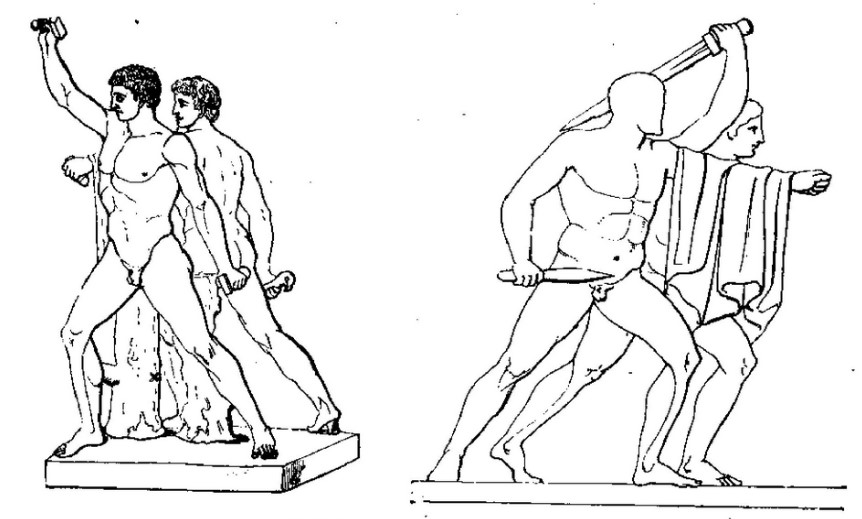
The archaeologist Friederichs Karl (1831-1871) was the first to identify the statues the group as the statues of two tyrant-slayers, while Johann Joachim Winckelmann (1717-1768) - a German art historian and archaeologist and one of the founders of the modern discipline of art history - saw the Roman copy of the statues of Tyrants at Rome, they had been falsely restored as gladiators, and placed opposite to each other, instead of side by side.
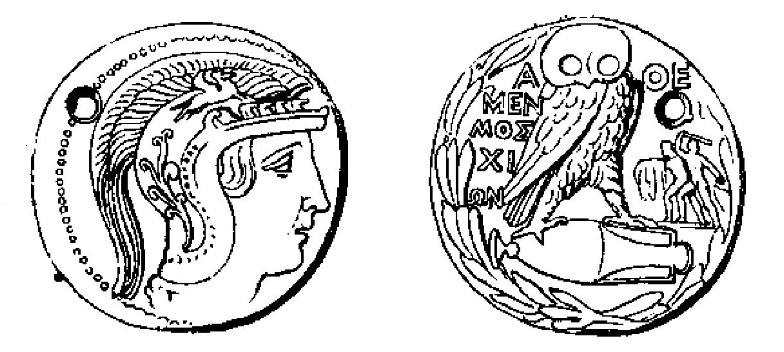

But their proper position is seen in a marble relief found by Stackelberg [ Graber der Hellenen, p. 35] at Athens, on the back of a magistrate’s chair and on some Athenian coins (tetradrachmae).
Harmodius is the younger, clean-shaven, who thrusts a sword forward in his upraised right hand, another sword in his left hand. Aristogeiton is the older, also he brands a sword, with a chlamys, or cape, draped over his left shoulder. Of the four swords only the hilts are left. The head of Aristogeiton, as well as the left hand and right arm, are not original. Then the group was found partly fragmentary and was restored. Only the head of Aristogiton was missing, replaced with another that dates back to the 4th century.
In order to know more:
- Wikipedia: [1]
- Greek and Roman sculpture: a popular introduction to the history of Greek and Roman sculpture by Perry, Walter Copland. Publication date 1882.
- Ancient Athens: its history, topography, and remains by Dyer, Thomas Henry, 1804-1888. Publication date: 1873.
This page was last edited on 21 June 2024
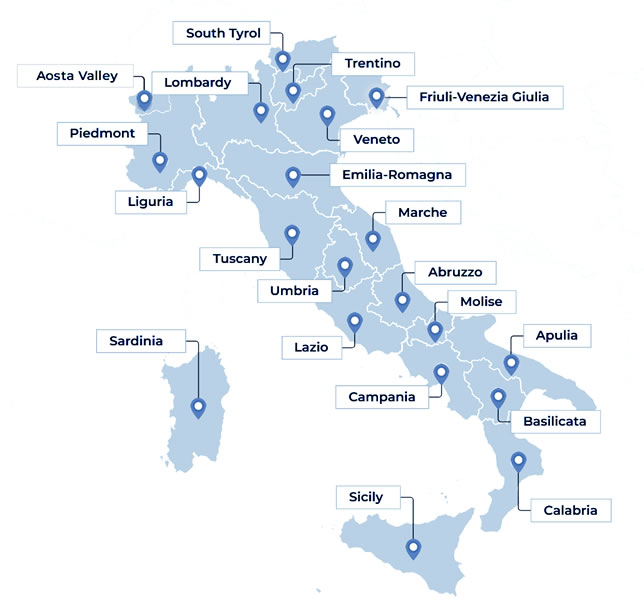
Open in Google Maps and find out what to visit in a place.
Go to: Abruzzo | Aosta Valley | Apulia | Basilicata | Calabria | Campania | Emilia Romagna | Friuli Venezia Giulia | Lazio | Liguria | Lombardy | Marche | Molise | Piedmont | Sardinia | Sicily | South Tyrol | Trentino | Tuscany | Umbria | Veneto

Text and images are available under the Creative Commons Attribution-ShareAlike License 4.0; - italystudynotes.eu - Privacy